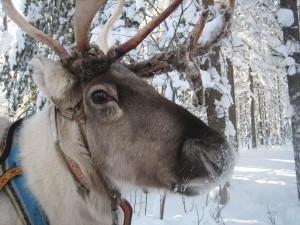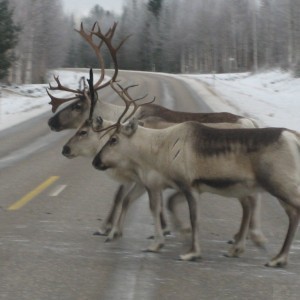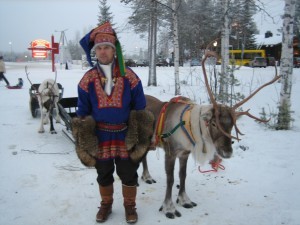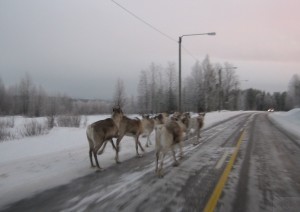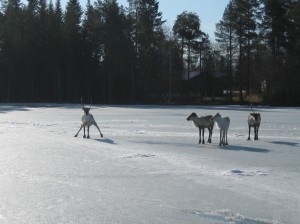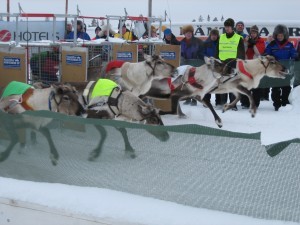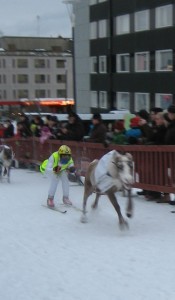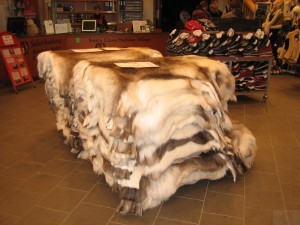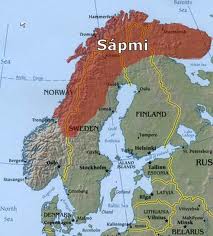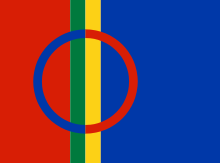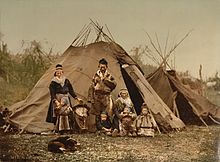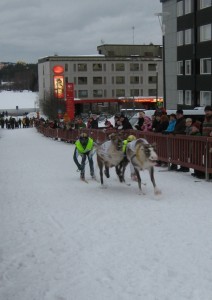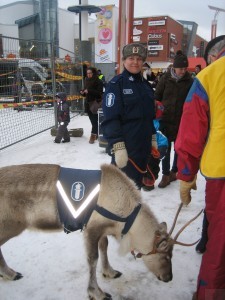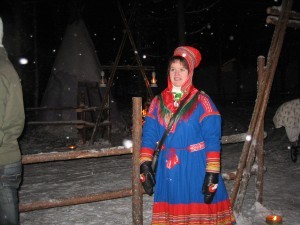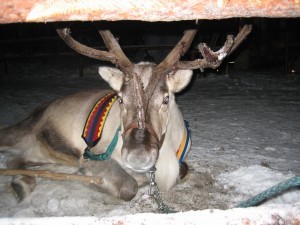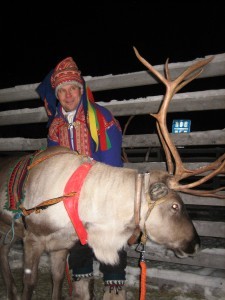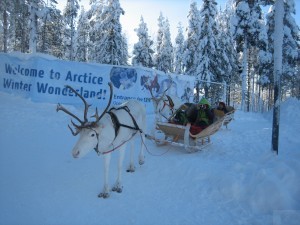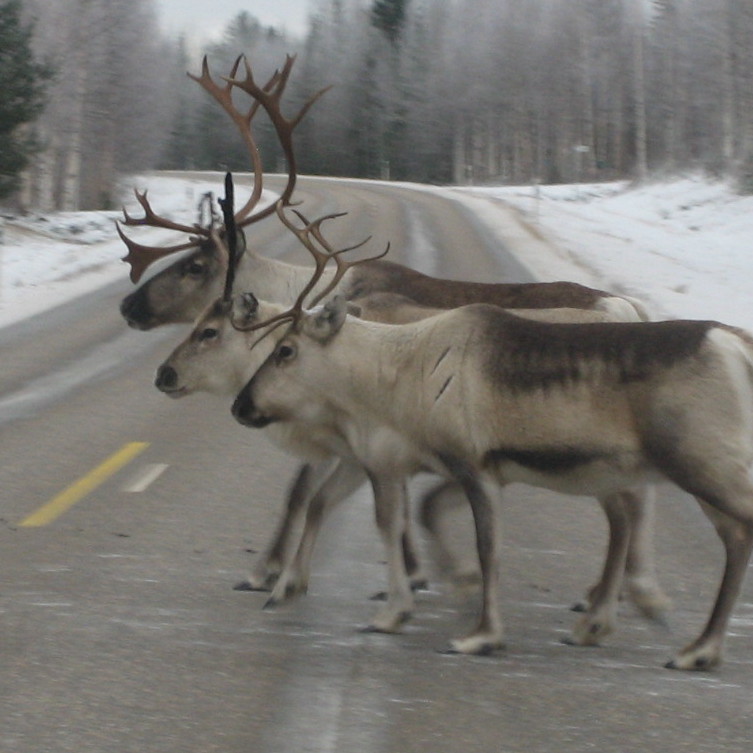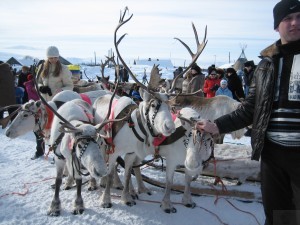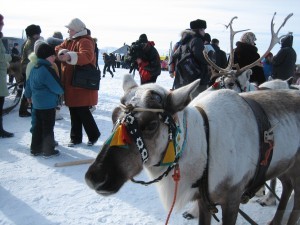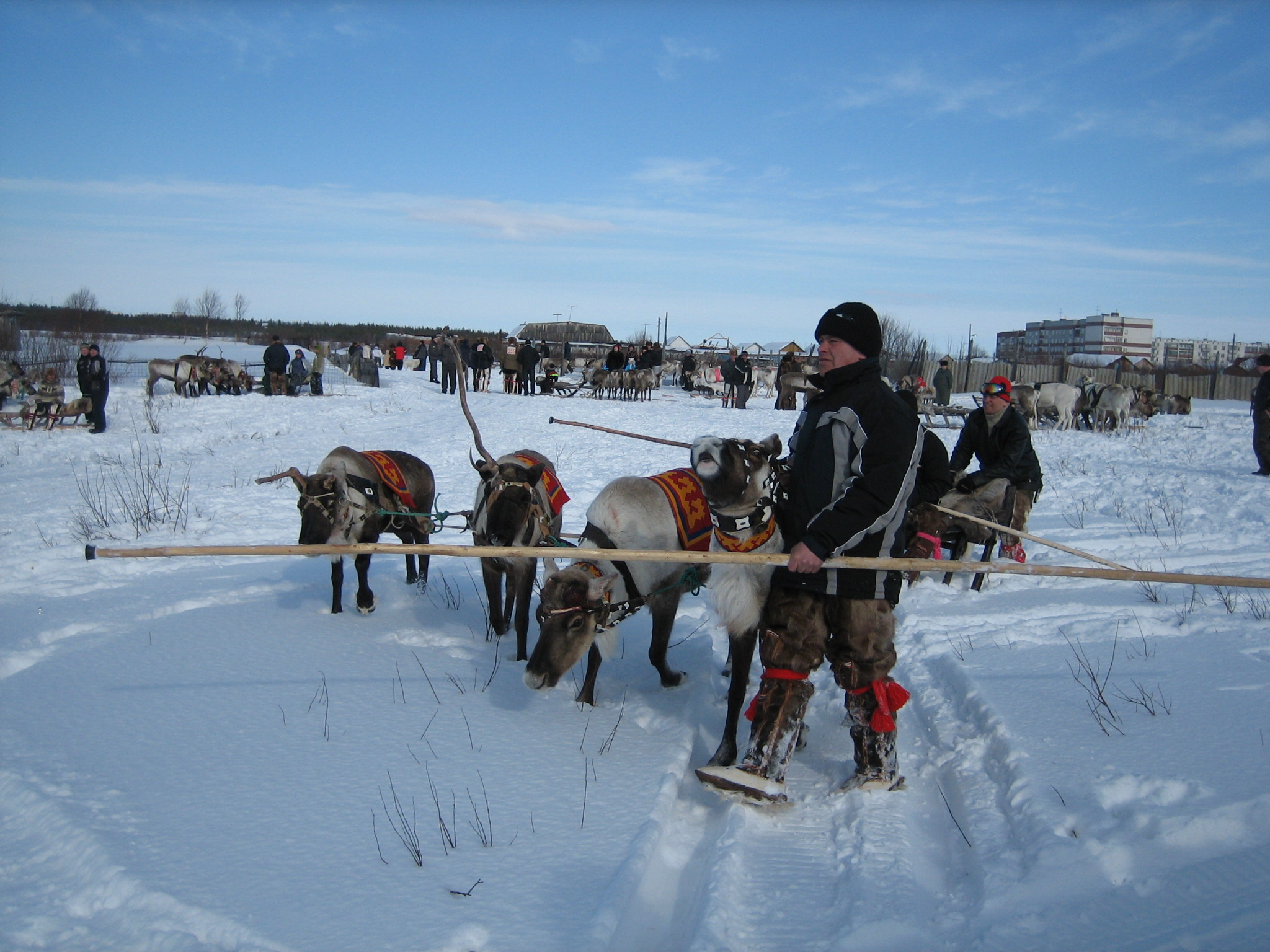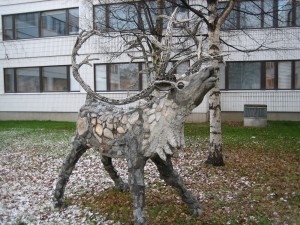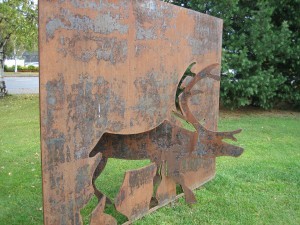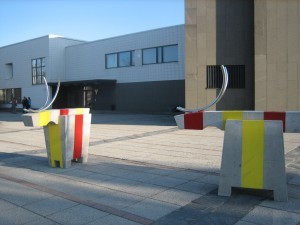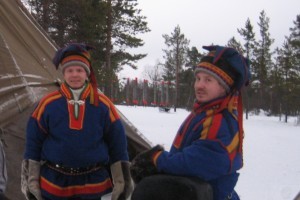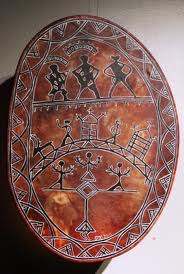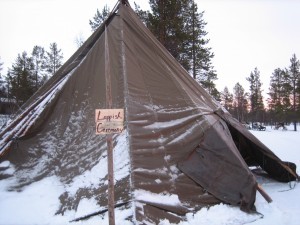In Lapland all reindeer are domesticated. So all reindeer hunting is prohibited. Reindeer have been herded for centuries by the Sami people. They all keep and have kept reindeer for meat, hides and antlers. Earlier they also milked the reindeer and used them for transportation. In Siberia they even used the reindeer for riding. But then we need to remember that the Siberian reindeer are larger than their Lapland relatives.
They roam freely on pasture grounds in the north of Finland, Sweden and Norway. In traditional nomadic reindeer herding, the herders migrated with their herds between coast and inland areas by the same migration routes, and herds are keenly looked after.
Even if they were tamed for milking and for use as aught animals or pack-load beasts, still the large majority of reindeer have never been bred in captivity. The female reindeer calves in the spring in May. At this time the doe can nurse its calf without worrying about annoying insect swarms that come later. During summer the most important food for the reindeer is birch leaves, grass and lichen.
Even if the reindeer has been domesticated, they still are quite timid and will avoid people. During the mating period in autumn I have been warned to be a little careful to be near male reindeer. They may attack if provoked. Lapland’s predators, such as the wolverine, bear and wolf, are the natural enemies of the reindeer.
The Sami people also use reindeer in running competitions. The yearly arranged Reindeer cup in Lapland has many spectators; both tourists and inhabitants. In the middle of Rovaniemi city they also arrange a reindeer run every year in the middle of March.
I have, as many tourists, also bought me a reindeer hide. People preparing the skins nail the skins on a wall to dry out. When the fat of the skin dries on the surface of the hide, it gets water-repellent. The dried skins are nice to lie on. Thus these skins are much used on sledges in winter. Otherwise you can use the reindeer hide even in summer to sit or sleep on. When you visit a Lappish teepee you’ll notice the ever-present reindeer hides.
Reindeer skins are used for making bags, slippers, mittens and footwear. In the Sami language one type of footwear is called “nuvttot” which has the hairy side out. Reindeer suede and leather are suitable for making clothes. Reindeer skin is thin and easy to shape. It’s also comfortable to wear.
There are also a lot of products made from reindeer horn, such as handles, buttons and key fobs among other things.
 In Rovaniemi they even have their own police-reindeer, Artturi. Other cities use to have police-dogs or -horses….:) Artturi is here watching over the reindeer cup in Rovaniemi city in March 2012.
In Rovaniemi they even have their own police-reindeer, Artturi. Other cities use to have police-dogs or -horses….:) Artturi is here watching over the reindeer cup in Rovaniemi city in March 2012.

